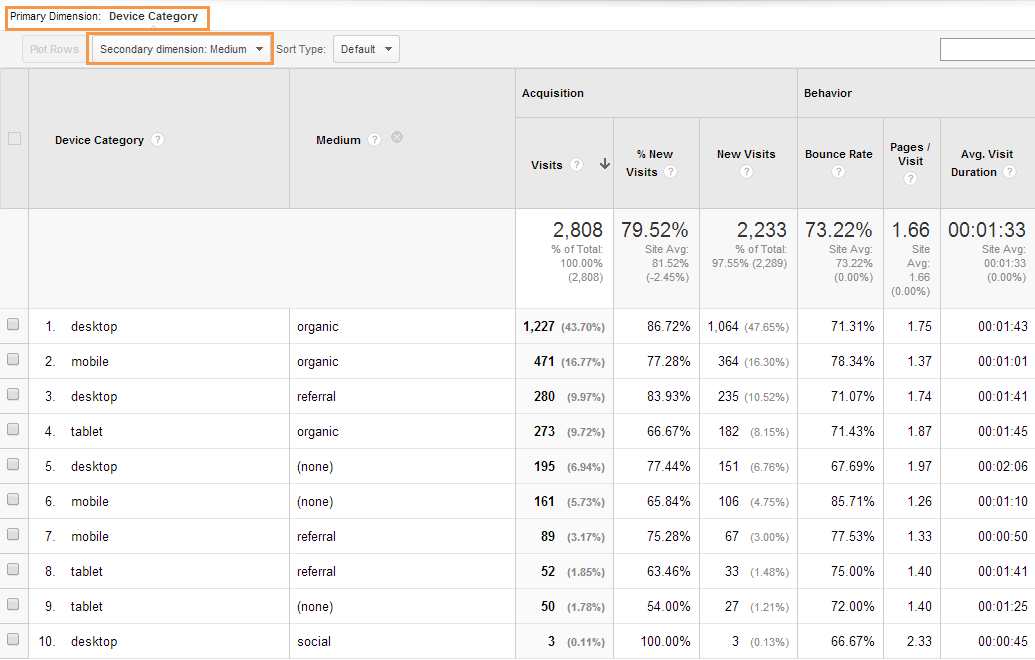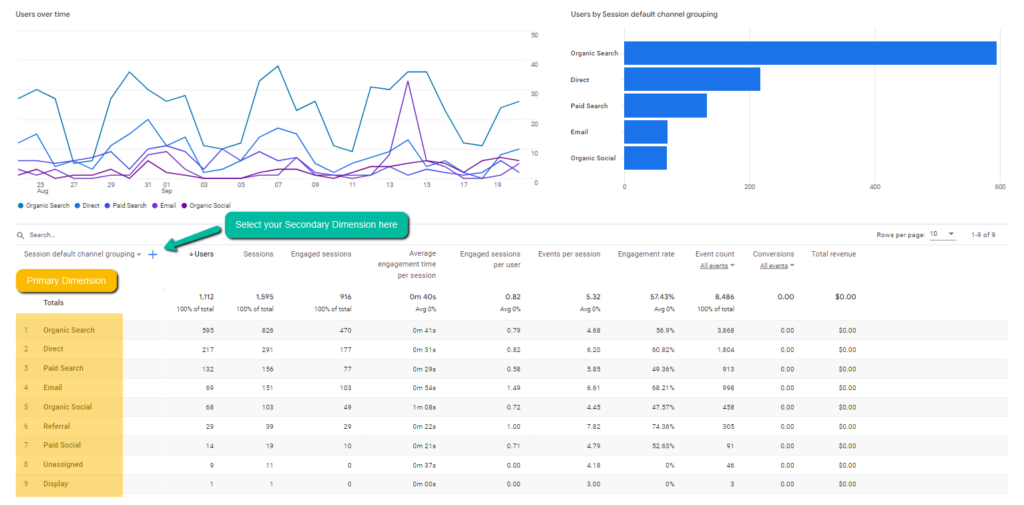Gain In-depth Perspectives With Secondary Dimension in Google Analytics
Additional dimensions in Google Analytics act as a powerful tool for enhancing the depth of insights derived from data analysis. Stay tuned to discover just how second measurements can revolutionize your information analysis and drive notified decision-making in the digital realm.
Understanding Secondary Dimensions in GA
The concept of additional dimensions in Google Analytics enhances data evaluation by giving added understandings into main metrics. Secondary dimensions permit users to dig much deeper into their data by adding an extra layer of info to the main data being analyzed. By including second measurements, individuals can segment and contrast information across different measurements, such as web traffic sources, customer gadgets, geographic locations, and extra. This extra level of granularity makes it possible for an extra detailed understanding of user actions and site performance.
Recognizing exactly how to properly make use of secondary dimensions in Google Analytics is essential for extracting beneficial insights from the information accumulated. By selecting the appropriate second measurements to complement main metrics, individuals can reveal patterns, patterns, and relationships that may have otherwise gone unnoticed. This deeper degree of analysis can cause even more informed decision-making and the optimization of electronic marketing techniques to boost total performance.
Advantages of Making Use Of Secondary Dimensions
Checking out the advantages integral in leveraging secondary dimensions within Google Analytics lights up the deepness of insights readily available for enhancing data analysis. By incorporating second dimensions, individuals can get a more comprehensive understanding of their primary data metrics. Among the key benefits is the ability to sector and filter information, permitting an extra thorough analysis of certain measurements such as web traffic sources, user actions, or geographical area - Secondary Dimension in Google Analytics. This segmentation assists in identifying patterns, patterns, and connections that may not be evident when looking at the information in seclusion.
Furthermore, secondary measurements allow users to contrast and contrast different data factors within the same record, offering a more all natural view of internet site efficiency. This relative analysis can clarify the performance of advertising and marketing campaigns, web content interaction, or user demographics. In addition, making use of second dimensions can aid in determining outliers or abnormalities that may need further examination.
Fundamentally, leveraging second dimensions in Google Analytics uses an effective device for drawing out valuable insights and enhancing data-driven decision-making processes.
Applying Additional Measurements Effectively
To successfully execute second dimensions in Google Analytics, planning the option and application of these additional information layers is paramount for optimizing the deepness of insights stemmed from analytics records. When picking additional measurements, consider the details goals of your evaluation to make certain the selected dimensions straighten with the info needed to answer relevant inquiries. It's crucial to prioritize relevancy over quantity, choosing measurements that complement the primary dimension and offer significant context.
In addition, comprehending the connection in between the key and second measurements is crucial. This comprehension enables you to interpret the information accurately and attract workable verdicts. Carrying out secondary measurements properly involves utilizing them to uncover patterns, trends, and connections that may not appear when examining information only based upon the key measurement. By including second dimensions thoughtfully, you can boost the granularity of your analysis and gain much deeper understandings right into individual behavior, material efficiency, and various other crucial metrics within Google Analytics.
Analyzing Information With Secondary Measurements
Using secondary measurements in information analysis gives a nuanced point of view that reveals elaborate relationships and patterns within Google Analytics reports. By incorporating additional dimensions along with primary measurements, analysts can dive deeper right into the information to draw out over here important understandings. When analyzing data solely based on main measurements., this approach makes it possible for the identification of connections that might not be right away obvious.
When analyzing data with additional measurements in Google Analytics, it is vital to consider the specific metrics or measurements that will certainly provide the most meaningful context for the main measurement being analyzed. Matching the main dimension of 'traffic source' with additional dimensions such as 'gadget category' or 'touchdown web page' can offer a more comprehensive understanding of user actions and preferences.
Furthermore, the ability to segment information using secondary dimensions enables a more granular examination of my review here customer communications, helping in the optimization of advertising methods, site performance, and general individual experience. By leveraging secondary dimensions effectively, organizations can make informed decisions based upon a comprehensive evaluation of their Google Analytics information.
Finest Practices for Secondary Measurements
When applying additional dimensions in Google Analytics, accuracy in choosing appropriate metrics is extremely important for obtaining actionable understandings from the data analysis procedure. One of the very best practices for making use of secondary measurements successfully is to straighten them with your main dimension to obtain a much more comprehensive understanding of your website or project efficiency. If your main dimension is 'Source/Medium,' pairing it with additional measurements like 'Device Group' or 'Touchdown Page' can provide understandings right into exactly how various gadgets or touchdown web pages impact web traffic from various sources.

On a regular basis trying out different mixes of additional and main measurements can aid you discover new connections and fads within your information, allowing you to maximize click here for info your techniques and enhance total efficiency (Secondary Dimension in Google Analytics). By adhering to these ideal techniques, you can leverage secondary dimensions in Google Analytics successfully to get much deeper understandings and make data-driven choices that favorably influence your organization

Conclusion
To conclude, additional measurements in Google Analytics give a valuable chance to get much deeper understandings into primary data metrics. By including a second measurement to reports, businesses can discover connections, fads, and patterns that might not be quickly obvious, bring about an extra comprehensive understanding of individual habits and communications on a web site. Carrying out additional measurements successfully and evaluating information with them can assist services make data-driven choices and enhance their online performance.
By incorporating secondary dimensions, customers can sector and contrast information throughout various measurements, such as web traffic sources, individual gadgets, geographic areas, and more. Carrying out secondary dimensions efficiently involves using them to reveal patterns, patterns, and correlations that may not be noticeable when analyzing information exclusively based on the primary measurement. By incorporating secondary measurements together with primary measurements, analysts can dive much deeper right into the information to draw out useful insights. One of the finest methods for using second measurements efficiently is to straighten them with your key dimension to get a more detailed understanding of your internet site or campaign performance. If your primary measurement is 'Source/Medium,' pairing it with second measurements like 'Device Category' or 'Touchdown Web page' can supply understandings right into just how different devices or landing pages impact traffic from different sources.